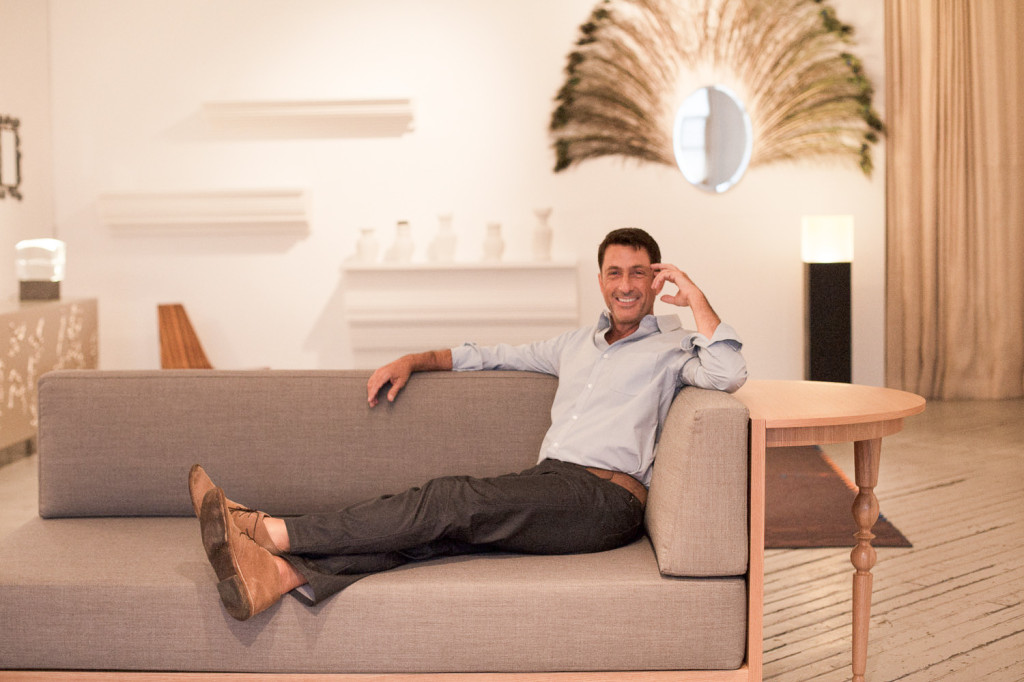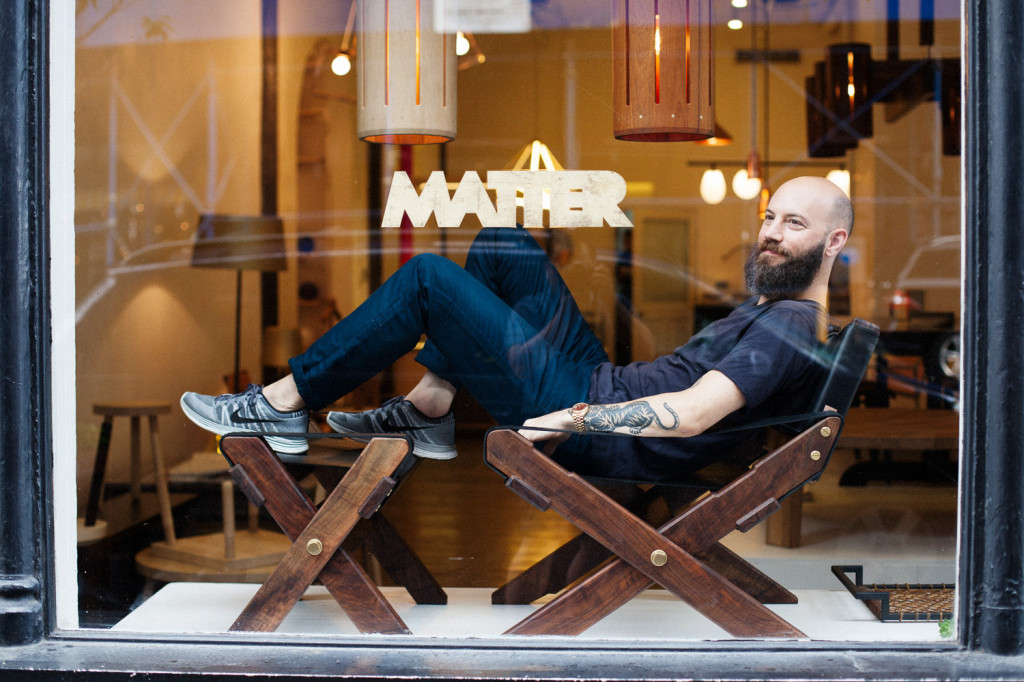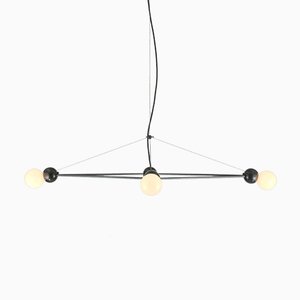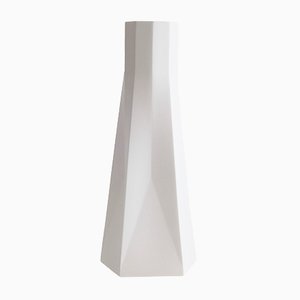Jill Singer identifies the movers and shakers revitalizing design in the Big Apple
New York Now
-
Roll & Hill
Courtesy of Roll & Hill
-
Collective Design Fair
<em>Courtesy of Collective Design Fair</em>
-
Collective Design Fair
<em>Courtesy of Collective Design Fair</em>
-
Collective Design Fair
<em>Courtesy of Collective Design Fair</em>
-
Roll & Hill
<em>Courtesy of Roll & Hill</em>
-
Collective Design Fair
<em>© Liz Ligon; courtesy of Collective Design Fair</em>
-
Collective Design Fair
<em>© Liz Ligon; courtesy of Collective Design Fair</em>
-
Mondo Cane
<em>Courtesy of Mondo Cane</em>
-
The Future Perfect, New York
<i>Courtesy of The Future Perfect</i>
-
The Future Perfect, New York
<i>Courtesy of The Future Perfect</i>
-
The Future Perfect, New York
<i>Courtesy of The Future Perfect</i>
-
Matter
<em>Courtesy of Matter</em>
-
American Designer Club
<em>Courtesy of American Designer Club</em>
-
American Designer Club
<em>Courtesy of American Designer Club</em>
-
Lindsay Adelman Studio
<em>© Joseph De Leo; courtesy of Lindsay Adelman Studio</em>
-
Lindsay Adelman Studio
<em>© Barrett Hanrahan; courtesy of Lindsay Adelman Studio</em>
-
Lindsay Adelman Studio
<em>© Joseph De Leo; courtesy of Lindsay Adelman Studio</em>
-
American Designer Club
<em>Courtesy of American Designer Club</em>
-
Roll & Hill
<em>Courtesy of Roll & Hill</em>
-
Mondo Cane
<em>Courtesy of Mondo Cane</em>
-
Matter
<em>Courtesy of Matter</em>
Maybe it seems trite to ascribe the rebirth of the New York design scene to the day in 2008 when the economy cratered, first here and then all over the world. After all, design ought to have been one of the first industries to feel the tangible tightening of purse-strings. And for a while, it was. There were no jobs; there were no clients.
But we New Yorkers are a resilient bunch, and what happened next was nothing short of a complete paradigm shift. Where there were no clients, designers figured out ways to self-produce. Where they couldn’t self-produce, they founded their own manufacturing companies. Where New York Design Week, anchored by the ICFF trade fair, was a moribund franchise that Europeans tended to skip, grassroots efforts arose to make it more appealing as an international destination. And just as New York itself bounced back more quickly than other cities, the design world was more nimble in its response to the crisis. A community that had been percolating here for years began to organize itself.
“When the economy collapsed, a lot of people had no idea what they were going to do,” says Jamie Gray, proprietor of the design store Matter. “I think that’s what really revitalized the atelier model. People became independent and started designing and manufacturing and making and distributing and doing their own thing. There was this idea that we needed to do something to change what was happening here on a local level.”
2010 is the year things began to shift. I myself founded the Noho Design District that year with my partner Monica Khemsurov. It’s a satellite show during ICFF, focused on emerging designers and meant to harness the quirkiness, fun, and creativity that’s synonymous with the design festivals in other cities like London. A year later, Wanted Design—another exciting pop-up event founded by Claire Pijoulat and gallerist Odile Hainaut—would follow suit. But of course there weren’t just more people curating design; there were more designers making it, and making it lovelier than ever before, especially after the Dutch-influenced one-liners that prevailed in the mid 2000s.
“This crop of emerging talents are educating themselves in construction, craftsmanship, materiality, and form,” says David Alhadeff, owner of The Future Perfect, who represents, with Gray, the most engaging of New York’s design retailers. “These ideas have a long-lastingness to them that’s thrilling. There’s more historical longevity in the work we’re seeing come out of the now than the then. There’s been a maturation of the scene, and the work is showing itself to be much more elegant and generally easier to live with.”
That kind of work is exemplified by a number of studios that launched only within the past few years—designers like Fort Standard , Bec Brittain, Rich Brilliant Willing, Chen Chen & Kai Williams, and Jonah Takagi, who, while based in Washington D.C., is often identified with a certain New York aesthetic. Which brings up another crucial point: While New York is the cultural capital of America, its design culture is informed by, and created in dialogue with, peers across the country doing similar work. Perhaps that’s why the current scene has made such an impact worldwide—it’s greater than the sum of its parts. “There’s a bit of a collective unconscious among people at the cutting edge,” Alhadeff points out. “What’s on trend here seems to be on trend in lots of different places and comes from lots of different people. Whether it’s Fort Standard in Brooklyn or a more seasoned veteran like Lindsey Adelman, or even someone out of Seattle, like Ladies & Gentleman Studio or Iacoli & McAllister. This community is so much larger than geography.”
Even so, it’s the leaders on our home turf that have been steering the ship and transforming New York into the design destination it always should have been. Here are a few of the people making a difference:
David Alhadeff, The Future Perfect
If anyone could be considered the patron saint of the current New York design scene, it’s David Alhadeff—ironic, considering Alhadeff is only 39 years old. The Seattle-born retailer opened the first Brooklyn outpost of his avant-garde design shop The Future Perfect way back in 2003, when America was emerging from its last economic recession. And for ten years, he’s been one of the most visible champions of emerging New York talent. When the shop first opened, comparisons were often made to that other former New York design mecca, Moss. And while both stores initially showed a similar kind of conceptually driven work, The Future Perfect always felt more distinctly American, whether it was offering a platform for homegrown designers like Jason Miller and Lindsey Adelman, hosting exhibitions in the Brooklyn shop’s basement, or, as of 2009, expanding into the heart of Manhattan with a Noho shop (now the only New York location since the Brooklyn boutique closed earlier this summer). But what a difference ten years makes: “When we started The Future Perfect, I felt like we had to defend the idea that design could come from America,” Alhadeff says. “Design has not been anonymous in America historically, but it had become anonymous through the ’80s and ’90s. Now once again there’s a scene that’s celebrated internationally, and New York has become the new hub of American design.”
Patrick Parrish, Mondo Cane
When Patrick Parrish was an MFA student at the School of the Art Institute of Chicago in the 1990s, he remembers walking to work one day and stumbling upon a George Nelson table selling for $10 outside an antique store. His boss at the time was the Chicago gallerist, now auction house owner, Richard Wright, who proceeded to “freak out” when Parrish arrived with the table in tow. “I didn’t even know what it was,” says Parrish, “and Richard said he could get $1500 for it. My rent was like $300.” It was then Parrish knew he wanted to be a dealer himself, and it was the first instance in what’s become Parrish’s specialty: finding serendipity in the unknown. At his Tribeca gallery Mondo Cane, Parrish specializes in 20th century vintage but can be found at least once a month installing the work of contemporary, often local, designers in the front room of his ground-floor space. Parrish only began this exhibition series in earnest three years ago, but the list so far includes emerging mega-talents like ROLU, Jonathan Nesci, and Doug Johnston. “I’m interested in people who haven’t shown before or who have never had a solo exhibition,” says Parrish (he gave ROLU, for example, their first-ever showcase). This has meant a lot to the New York design scene; Parrish has provided both an outlet where emerging designers can show their work, and a frequent destination where design lovers in New York can gather without schlepping all the way to Miami or Europe.
Kiel Mead, American Design Club
Until a few years ago, Kiel Mead was just another young New York designer knocking on the door of fame—though his jewelry work, like the cast-metal, bow-tied Forget-Me-Knot ring, earned Mead cult status and a steady income early on. But then something happened that shot him straight to the center of New York’s burgeoning design scene: Along with a few friends and fellow designers, Mead founded the American Design Club, which offers up-and-coming talents the chance to show their work via juried exhibitions and trade shows. Suddenly Mead was an organizer and impresario, as much a curator as he was a designer, throwing impossible-to-get-into exhibition openings during New York design week and being tapped for panels and focus groups, like the one that was recently formed to help envision a citywide NYCxDesign movement. “Since the very first show, the AmDC has been a magnet,” says Mead. “Designers think that the club can help them become bigger and better, get them in touch with stores, and get them in touch with other designers—and it does.” It also gets them a whole new audience; the AmDC brought their pop-up shop this spring to the Milan Furniture Fair, and they have a similar plan in the works for the London Design Festival as well.
Jason Miller, Roll & Hill
If you could peek into the studio of any young New York designer, chances are they’d be sketching away, furiously working on a brief for Roll & Hill. The New York–based lighting company was founded in 2010 by Jason Miller, a key player in what was once known as the Brooklyn design scene. Miller had made his name with a wildly popular chandelier based on different configurations of branchlike ceramic antlers (and had inadvertently helped spark the rustic, hunting-lodge décor trend that pervaded the past decade in America). As a lighting designer, he knew just how difficult it was find an outlet for self-produced projects. “Successful furniture companies tend to be the ones licensing designs from independent designers,” says Miller. “But in the States, there were independent, studio-based designers working like manufacturers themselves, and then there were giant companies. There was nothing really in the middle.” Roll & Hill stepped in to fill that niche, and in the years since, the company has become a de facto home for America’s best and brightest up-and-coming designers—Paul Loebach, Bec Brittain, and Fort Standard among them. Miller says that it’s easy to find local talents to work with, in part because of the vernacular that’s in vogue right now. “The Italians refer to it as ‘having soul,’” says Miller. “They always say that about Roll & Hill. I think what they’re referring to is a degree of historical context and rich materials, and a certain familiarity. That’s the kind of style that’s happening in New York right now in full force.”
Lindsay Adelman, Lindsay Adelman Studio
If you happen to have walked by the windows of Milan’s famed Nilufar Gallery during last April’s furniture fair, you might have witnessed a rare sight: the work of a young American designer on display, front and center. The gallery—which in the past has primarily featured the work of talented Europeans—was showcasing Lindsay Adelman’s Catch Lights, a series of pendants featuring glass orbs that appear squeezed through hardware-like brass links. Adelman has been making variations on this theme, blending the organicism of blown glass with the awkward forms of off-the-shelf parts, since she founded her eponymous studio in 2006. But in the past few years, her studio has grown exponentially and her work has become increasingly ubiquitous, with her Branch lights showing up everywhere from New York’s James Hotel to Ivanka Trump’s apartment in Elle Decor, and other work being shown as far as Carwan Gallery in Beirut. As a result, Adelman herself has become a bit of an international ambassador for the New York scene. “I’ve gone out of my way to seek out the most discerning audience in the world,” says Adelman. “And in a way that changes the perception of what kind of work comes out of the States or out of New York. There are relatively few living American designers who show in an international collectors’ market.” Adelman is paving the way for others to follow.
Steven Learner, Collective Design Fair
Steven Learner is no stranger to the world of high-end collecting. When he graduated from architecture school in the early 1990s, he started his career working for Richard Gluckman’s firm, helping to design art galleries from Marlborough to Mary Boone. Later, when he struck out on his own, Learner began working for residential clients who wanted to incorporate both art and design into their modernist interiors. “I was traveling to design fairs in London and Miami and I was coming home and realizing that the fairs here weren’t at the same level. New York had antique fairs with one or two galleries showing contemporary or 20th-century work but none that were dedicated to that period and certainly not at the quality level found elsewhere.” And so, earlier this year, Learner created his own design fair on the west side of Manhattan, running concurrently with New York’s incarnation of the Frieze Art Fair. Collective .1 gathered together New York’s best furniture galleries—Mondo Cane, Cristina Grajales, and Demisch Danant among them—along with upstarts like Volume and Grey Area and imports like Johannesburg’s Southern Guild. “I liked the idea that I could go to a great design fair and sleep in my own bed. I also really believe that New York should have the best of everything.” Apparently New Yorkers agreed: “We had everyone from 8-year-olds to Michael Stipe,” Learner says.
Jamie Gray, Matter
When you begin to list the names of American designers whose careers have been launched in part by Jamie Gray of Matter—and the in-house furniture line he started in 2010—it reads like a who’s who of the current scene: Jonah Takagi, Paul Loebach, Meg Callahan, Jonathan Nesci, not to mention Andy Coolquitt, the Austin-based fine artist who’d never designed a proper piece of furniture before Gray came calling. Gray also launched the first production line by interior designers Roman & Williams this spring. But none of those people would have worked with Gray in the first place if he hadn’t been quietly building up, since 2003, one of the best-curated furniture stores in New York City. Gray, who started out as a midcentury dealer in Seattle but moved to New York to attend design school, opened the first incarnation of Matter in Brooklyn’s Park Slope. Over the years, the shop moved from Brooklyn-made furniture and accessories to fashionable European imports—and moved physically as well, to a more sophisticated space in downtown Manhattan. But the store began to truly, well, matter, when Gray launched Mattermade. Here was a powerhouse furniture collection, made in America by Americans—a rarity back then, though something that’s happily becoming more commonplace. The difference is that Mattermade feels like it couldn’t have been made anywhere else, with its designs that often reference East Coast vernaculars like Shaker and Windsor. “I was just in Los Angeles trying to imagine the collection there, and I was having a hard time,” says Gray. “It was never meant to be specifically New York, but I would say it is inherently, because that’s where the conversations began.”
-
Text by
-
Jill Singer
Jill is co-founder and editor at online design magazine Sight Unseen and a freelance writer living in New York. Former editor at I.D. Magazine, she has written for PIN-UP, NYT T Style Magazine, V Magazine, W, and New York.
-
-
Photography by
-
An Rong Xu
An Rong is a documentary photographer and sensitive artist from New York’s Chinatown. His clients include TimeOut New York, Singapore, Penthouse, Fast Company, Maxim, Slam, Complex, Hyphen, NYPost, Puma North America, and The School of Visual Arts.
-






















 David Alhadeff
© An Rong Xu for L'AB/Pamono
David Alhadeff
© An Rong Xu for L'AB/Pamono
 Patrick Parrish
© An Rong Xu for L'AB/Pamono
Patrick Parrish
© An Rong Xu for L'AB/Pamono
 Kiel Mead
© An Rong Xu for L'AB/Pamono
Kiel Mead
© An Rong Xu for L'AB/Pamono
 Jason Miller
© An Rong Xu for L'AB/Pamono
Jason Miller
© An Rong Xu for L'AB/Pamono
 Lindsay Adelman
© An Rong Xu for L'AB/Pamono
Lindsay Adelman
© An Rong Xu for L'AB/Pamono
 Steven Learner
© An Rong Xu for L'AB/Pamono
Steven Learner
© An Rong Xu for L'AB/Pamono
 Jamie Gray
© An Rong Xu for L'AB/Pamono
Jamie Gray
© An Rong Xu for L'AB/Pamono





